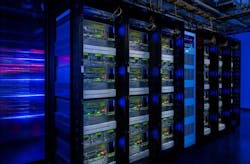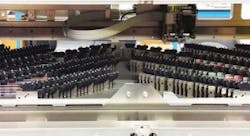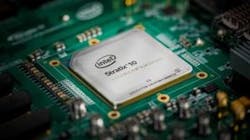How the Rise of AI is Shaping the Data Center Industry
Artificial intelligence has profound implications for society, and for the data centers that will power it. The rapid growth of AI is contributing to the building of new services, as well as enhancing products already on the market. And the growing popularity of machine learning as a business is also boosting demand for powerful high performance computing hardware.
The emergence of AI is a key theme here at Data Center Frontier. The rise of AI applications will drive demand for data center space, and have design implications for how high-density racks are powered and cooled. To help our readers, we’ve put together a collection of resources to understand the importance of artificial intelligence industry for the data center industry.
First up, read about AI’s impact on the data center, both in managing data center facilities and the hardware that runs inside them:
ROOT Generator Will Use AI to Monitor its Generators: Backup generators at a ROOT Data Center facility near Montreal. (Photo: ROOT Data Center)ROOT Data Center announced that it is teaming with LitBit to use artificial intelligence to monitor its backup generators, marking the first use of this type of technology to reduce the risk of data center outages.
ROME is a robotic cable management system from Wave2Wave that can automate cross connects in data center Meet Me Rooms. (Photo Wave2Wave)
Startups Foresee Future Where AI, Robots Manage Data Centers: Will artificial intelligence and robotics manage the data centers of the future? DCD Webscale, LitBit and Wave2Wave discussed new products to streamline data center management and address the industry’s staffing challenges.
Big Sur: A Closer Look at the Engine Powering Facebook’s AI: The Big Sur GPU-powered server is the key to Facebook’s bid to create a smarter newsfeed for its 1.6 billion users around the globe. We see it in action at Facebook’s Oregon data center.
Project Brainwave: Intel FPGAs Accelerate Microsoft’s AI Hardware: Microsoft unveiled Project Brainwave, a deep learning acceleration platform and the latest fruits of its collaboration with Intel on FPGA-based computing.
The Intel Stratix 10 FPGA is a key accelerator for Project Brainwave, Microsoft’s new approach to hardware for artificial intelligence. (Photo: Intel)
New Server Hardware Boosts Data-Crunching for AI, Cloud: The rise of specialized computing is bringing powerful new server hardware into the data center, a trend seen in new tech from Google, NVIDIA, AMD, ARM, Intel and Microsoft.
The Fog Layer: AI at the Edge of the Network
You can’t talk about artificial intelligence without talking about the “fog” layer or in this case, AI at the edge of the network. Popular topics stemming from this layer of the artificial intelligence industry include AI-guided drones and robotic personal assistants:
Supercomputing Moves to the Edge With AI-Guided Drones: Avitas Systems’ drone inspection service is bringing data-crunching to remote locations with the NVIDIA DGX Station “supercomputer in a box.”
New Chips, Software Shift Workloads From Clouds to Mobile Devices: Advances in hardware and software are bringing the computing power of the cloud into devices in our pockets, allowing smartphones and IoT devices to run AI neural networks and other data-intensive processing.
Moving Beyond The Terminator
One of the challenges facing today is the public’s general anxiety about artificial intelligence and robotics. Think the “Terminator” series. But the tech and AI industry is making efforts to change that stereotype, and leading with use cases of the benefits of AI:
Beyond SkyNet: Reframing AI as a Force for Good: Widespread anxiety about artificial intelligence presents a challenge for companies building the new generation of technologies, as well as the data centers that will power them. The tech sector is trying to change that.
AI Ushering in Platform Shifting Era of the Personal Assistant: Artificial intelligence experts showed off impressive new applications of the technology at the O”Reilly Artificial Intelligence Conference, but also wrestled with the tensions about hype, language and the societal impact of this technology.
Keep pace with the fact-moving world of data centers and cloud computing by following us on Twitter and Facebook, connecting with Data Center Frontier editor Rich Miller on LinkedIn, and signing up for our weekly newspaper using the form below.




